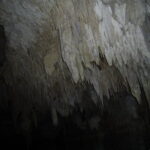Cava is described as Spanish champagne and is the only appellation description found around the world outside of champagne. The word “cava” translates to underground cellar and refers to the history of aging cava underground in cellars or caves. This appellation means that cava can only be produced in specific areas in Spain, any wine that is not made in these locations; even those that are made in the exact process cannot be called cava. More than 98% of all cava is made in the Catalonia area with the other 2% being produced in 11 different provinces that spread of approximately 1/3 of Spain. The other main cava producing areas include Navarra, Castile and Leon, Aragon, Extremadura, Rioja, Valencian and Basque Country.
The successful cava was made in 1872 using the same production method as champagne. The first winemaker to produce this sparkling wine was Luis Justo I Villanueva and he was trained in champagne. It was three of his students that successfully crafted the style of cava. Grapes that are used in cava blends include Parellada, Xarel-lo, Macebo, Subirat and Chardonnay, white grape varietals. No one knows exactly why these grapes were chosen, but it is known that they are more suited to growing in the Spanish climate. Traditionally cava is made from these grapes though there is no law that specifically states grape usage. Some cava producers argue that using other grape varietals will erode the known character and style of Cava, though many producers are incorporating juice from black grapes into the base wine blend.
Historically there are two main producers of cava, Freixenet and Codorniu. There are many other smaller producers but wine professionals have come to realize that the vast majority of cava, more than 75% are actually quite boring and do not stand out and winemakers attest this to be because of the grapes traditionally used to make cava. Macebo, Parellada and Xarel-lo do make a good base wine but many producers do not use a good blend of all three varietals. As optimal vineyard sites and new clones of these varietals are found it is thought that overall cava quality will improve and consumers will not have search for that sparkling gem among the average cava’s. Winemakers believe that the addition of juice from black grapes will help fix what is lacking in cava, namely crisp acidity, more linearity and length in the mouth and more fruit flavors. In fact, Cordorniu’s cava is considered one of the top sparkling wines made around the world and it consists of juice from white and black grapes.
The terms on cava label refer to the amount of time the wine is aged in the caves. Typically cava is aged for a minimum of nine months. A cava that is labeled as “riserva” will be aged for a minimum of three years and a wine with “gran riserva” will have been aged for five years. Unlike champagne, cava can be drunk when very young, after only a year. There is also a rose style of cava. A small amount of still red wine is added to the sparkling wine to produce a pinkish color. Garnacha, Monasterell and Pinot noir grapes may be used for rose, or rosada cava. As with champagne the sweetness or dryness of the cava varies. Cava’s are made as extra dry (no sweetness) and brut or dry. Then the sweetness of cava increases from extra seco, to seco and semi-seco. The sweetest cava is labeled as dulce and this wine contains more than 50 grams/liter sugar.
Some recommended cava’s include the Cuvee Raventos from Codorniu. This wine is fruity and elegant, due to the incorporation of Chardonnay into the blend. Another good choice is the Raimat gran brut from the same producer. This has lemony fruit aromas and creamy oak like tones. Frexeinet’s Cordon Negro in the black bottles is the most well known cava from this winery. This is a very dry champagne with almost no residual sugar. Another groundbreaking cava from Freixenet is the Monastrell-Xarel-lo cava brut, the first to use a black grape, Monastrell, for a commercial cava. It is a very soft cava that is very fruit, but is available in extremely limited quantities. Other cava producers include Faustino Martinez that make a Cava extra seco; Juve Y camps that make a brut vintage, cava grand juve y camps and the reserve de la familia cava brut natural; Parxet makes a range of cava from brut blends to very sweet dessert cava; and Mont Marcal with its best cava the Extremarium brut de Mont-Marcal.



